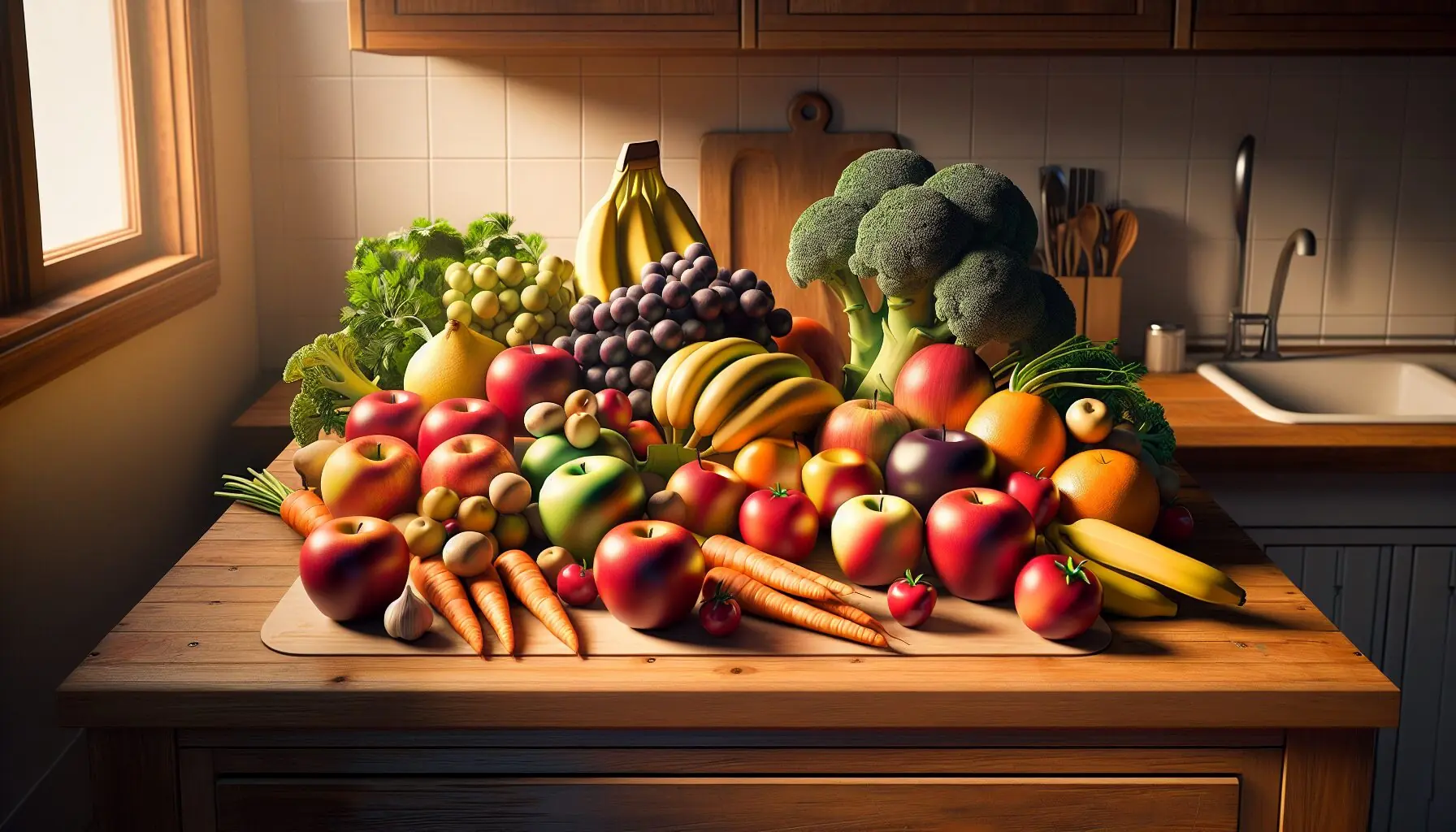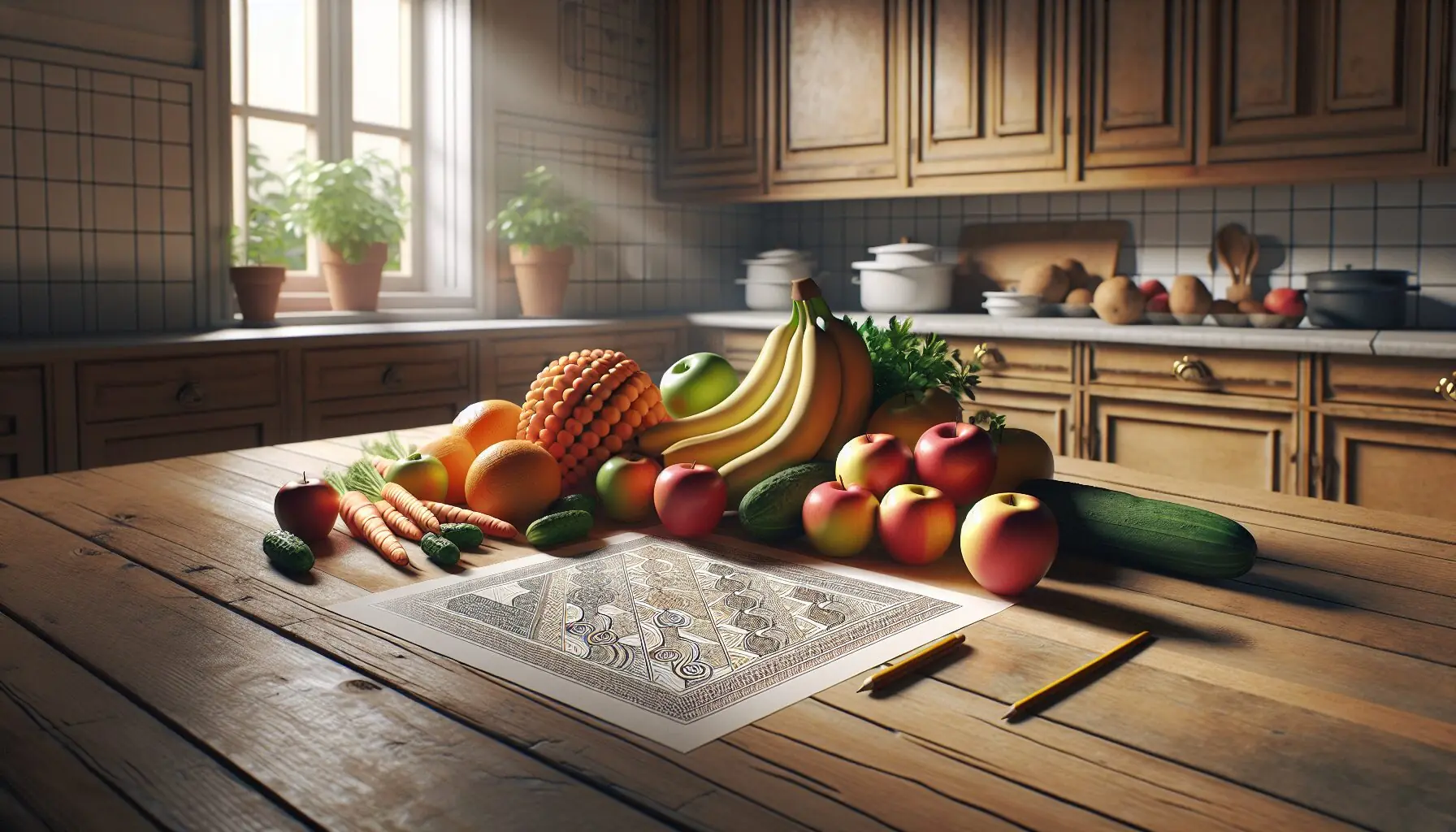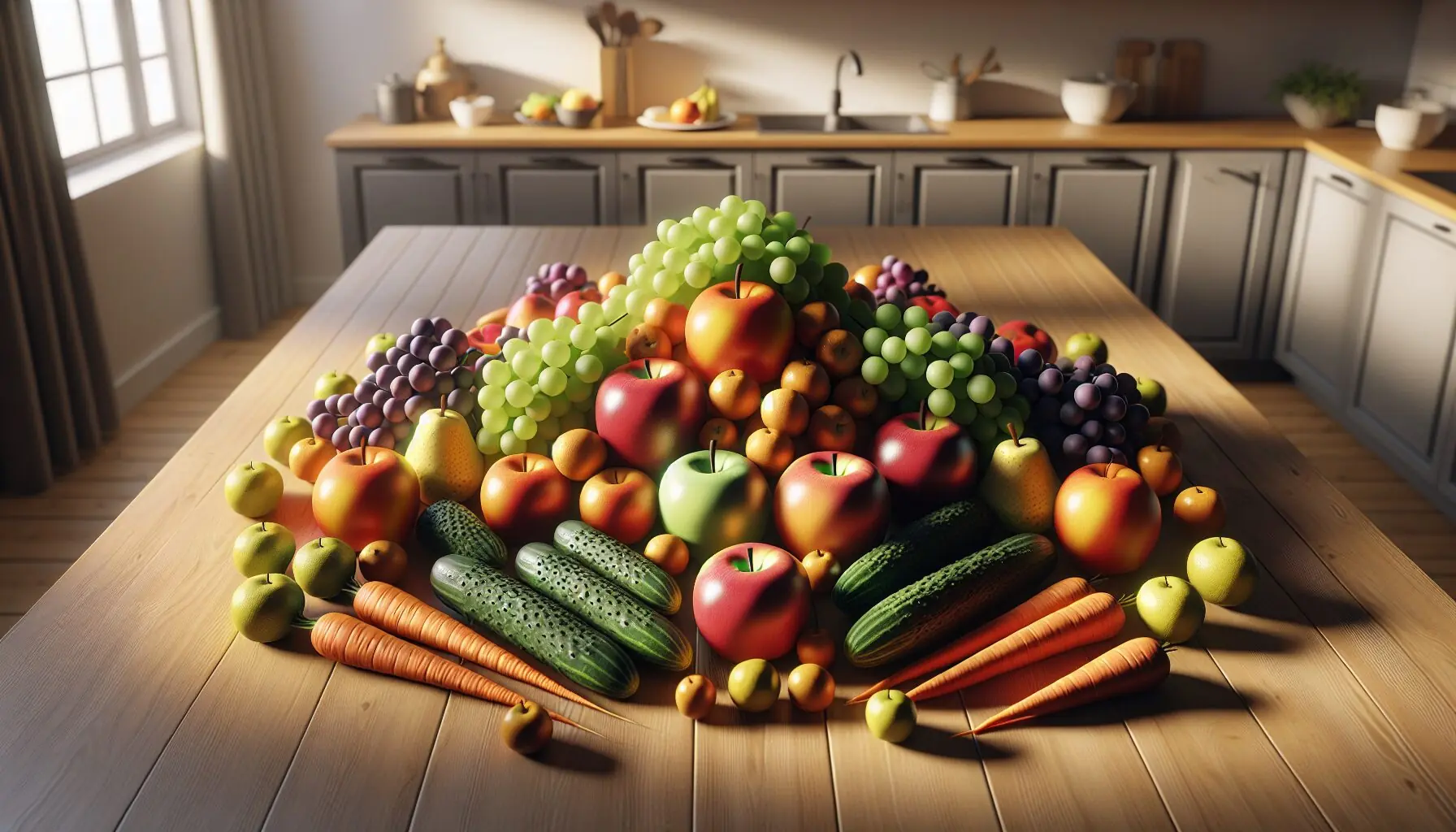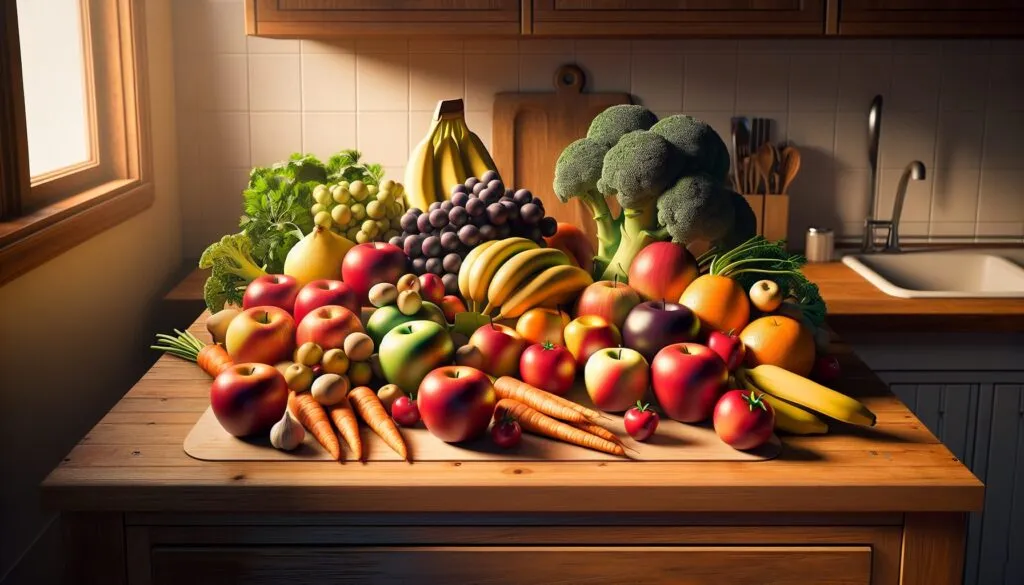Playful Patterns in Nature
Discovering patterns is like unveiling a secret code! Whether in math or the world around us, patterns are everywhere, especially in nature. With fruits and vegetables, kids can explore these natural wonders while boosting their pattern recognition and classification skills.
Why is this important?
Identifying and creating patterns help young learners develop foundational math skills. It’s a playful way for children in Grade 1 to connect with abstract concepts using tangible elements like their favorite snacks! Plus, it sparks curiosity and makes learning a joyous adventure right from their kitchen.

Crafting Patterns with Fruits and Veggies
For a deliciously simple activity, gather some fruits and vegetables. You’ll need items like apples, bananas, carrots, and cucumbers. Each has its unique color and shape, making them perfect for this engaging exercise.
Materials Needed:
- A selection of fruits and vegetables
- A cleared table space
- A simple pattern template (drawn on paper)
Instructions:
- Start by laying out one or two fruits or vegetables in a simple sequence (e.g., apple, banana, apple).
- Encourage your child to continue the pattern or create their own.
- Talk about the colors, textures, and shapes as they play.
Time Commitment:
About 20-30 minutes.
Tips for Fun:
Mix it up by using the food elements to also create faces or funny shapes for added silliness. Let your child lead the exploration—who knows what creative combinations they’ll make!

Nurturing Curiosity and a Love for Learning
Engaging in pattern-making with fruits and vegetables serves multiple developmental purposes. Firstly, it enhances your child’s curiosity and nurtures a love for learning by making education tactile and fun. This activity supports developing fine motor skills as they handle different shapes and sizes.
Emotionally, it fosters patience, critical thinking, and creativity. Moreover, this shared experience strengthens the bond between you and your child, turning everyday items into tools of discovery.
It’s also a delightful reminder of how learning doesn’t always need books—sometimes it’s hiding in your fridge!

